Toyota’s Future Product Lineup: More than Pure Electric Cars
CTO Shigeki Terashi, executive vice president of Toyota, announced at the company’s shareholders’ meeting on June 16 that within the next 30 years, Toyota’s product lineup will not be limited to pure electric cars but will provide multiple choices. Unlike many other automotive giants such as Volkswagen, General Motors and Mercedes-Benz which plan to go pure electric within the next 20 years, Toyota insists that hybrid models and fuel cell cars will also have a lasting impact on the global automotive market.
Hybrid + Fuel Cell
Although Toyota is not a pioneer in the field of pure electric vehicles, it’s not too late to enter. In 2010, Akio Toyoda, the fourth-generation head of the Toyota family, responded to an invitation from Tesla CEO Elon Musk to test drive the Tesla Roadster. Afterwards, Toyota bought a 3.15% stake in Tesla for $50 million and invested another $100 million in October of that year to jointly develop the Toyota RAV4 pure electric version.
In the RAV4 EV project, Tesla provided the three-electric system, while Toyota sold its California factory to Tesla for $42 million. Although it seemed like a win-win arrangement, their cooperation came to an end in 2016.
One of the reasons for the termination of the RAV4 EV project was its dismal sales performance with only 2,000 units sold, which contradicted Toyota’s energy-saving policy: “New energy vehicles can only truly contribute to the environment when they are popularized.” Moreover, instead of relying solely on electric vehicles, Toyota has the unbeatable THS (Toyota Hybrid System) hybrid technology.
Toyota launched the G21 project in 1992, which led the team to develop a power division system with a core structure of “planetary gears” among 90 hybrid schemes.
Although Toyota’s THS does not provide a significant increase in power, “it excels in smoothness and fuel economy”. Thanks to THS technology, the Prius that debuted in 1997 became the world’s first mass-produced hybrid car (HEV).As of September 2020, according to official data from Toyota, its hybrid vehicles have exceeded 15 million units in cumulative global sales. Even in the Chinese market, the cumulative sales of hybrid models such as the Corolla and Levin have exceeded 1 million units.
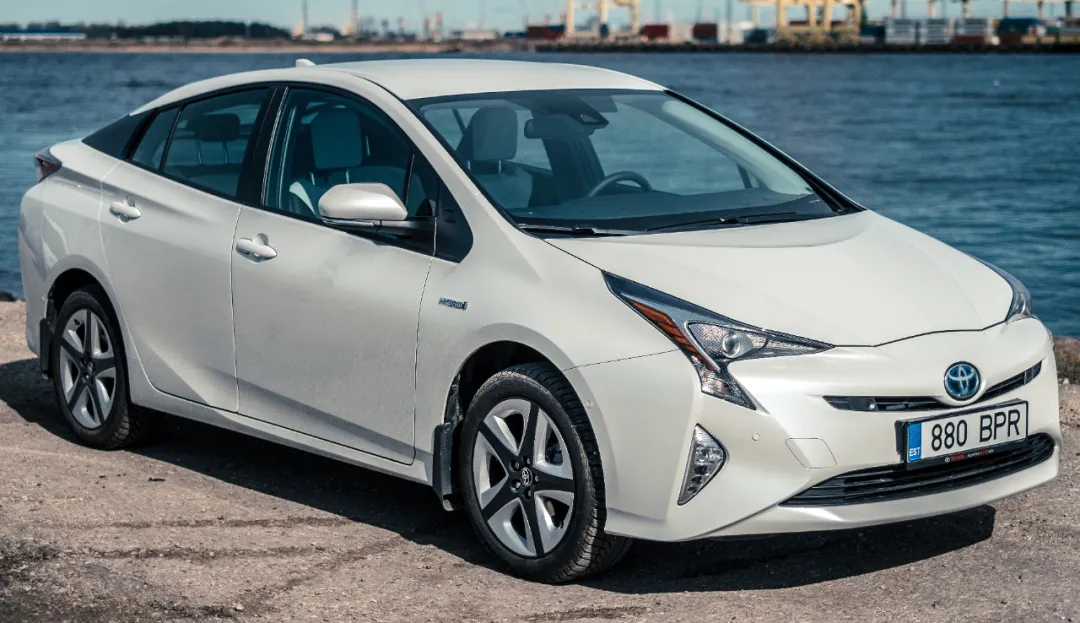
Toyota’s hybrid technology is undoubtedly a success, to the point where there is a saying among the public: “If there are only two types of hybrid technology in the world, one is hybrid and the other is Toyota’s.” However, the success of hybrid technology has also objectively limited Toyota’s emphasis on pure electric technology. After the discontinuation of the RAV4 EV in 2014, Toyota did not launch a pure electric vehicle for a long time.
In addition, Toyota has built a comprehensive patent barrier for its hybrid technology. For other automakers, it is not a wise move to bypass Toyota’s patent barrier and develop their own hybrid technology, as it is costly.Hybrid technology has enabled Toyota to make great progress in the field of new energy, but this overall success has to some extent limited the prosperity of the entire industry.
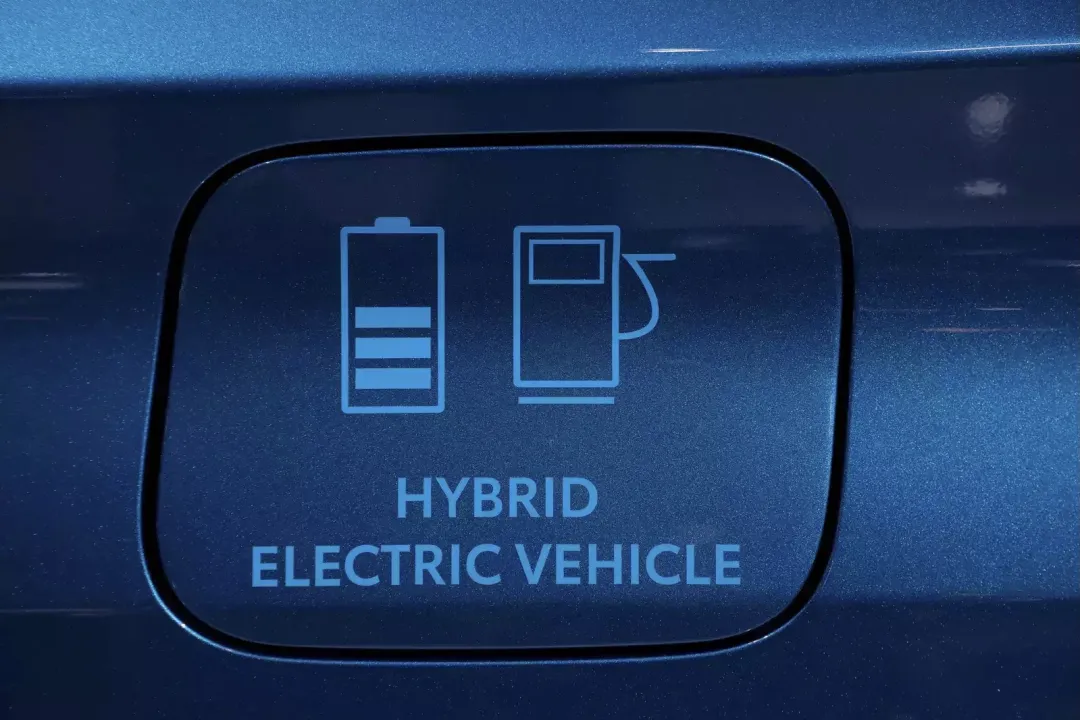
This is a “innovator’s dilemma”. Toyota has chosen the hybrid route, invested huge sunk costs, and after the technology has matured, the group’s focus is naturally on deploying hybrid technology to the market, recovering costs, and earning profits.The greater the inertia of successful companies in the previous industry, the more difficult the transformation will be when the next wave comes.
In the eyes of Toyota’s hybrid father, Takeshi Uchiyamada, hybrid technology is the foundation of new energy vehicles, and he views it as a key to unlock the new energy vehicle market. However, in plug-in hybrids, electric vehicles, and hydrogen fuel cell vehicles, Toyota seems to prefer hydrogen fuel cell vehicles.
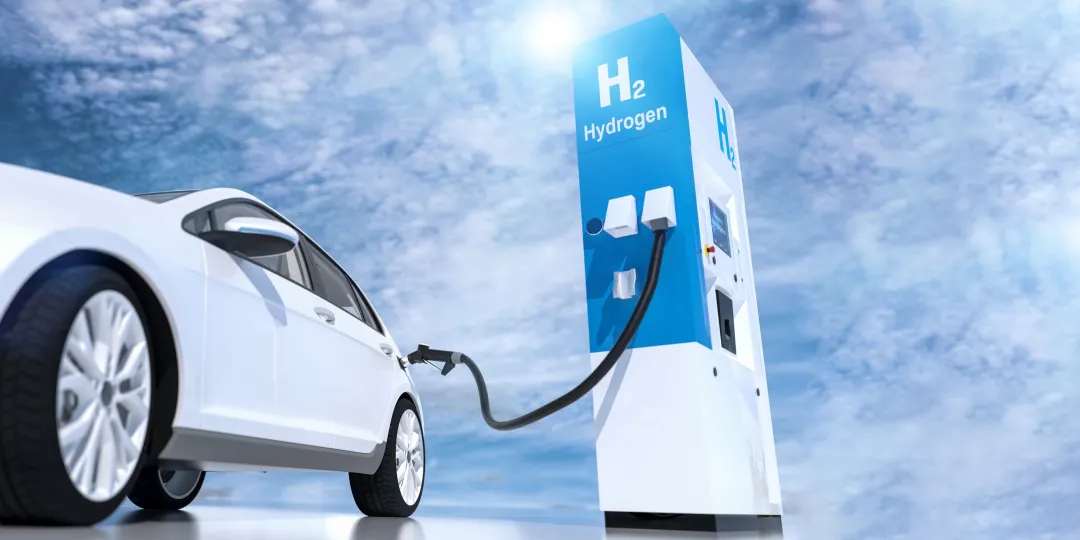
On the one hand, Takeshi Uchiyamada, the leader of Toyota’s new energy project, is a staunch supporter of fuel cells; on the other hand, since the 2011 Fukushima nuclear power plant accident, Japan’s energy strategy has to some extent returned to fossil fuels, and in the subsequent “Basic Energy Plan”, hydrogen energy was positioned as a core secondary energy source on par with electricity and heat energy, and proposed the vision of a “hydrogen society”.
With its own technological accumulation and the combined stimulation of domestic energy strategy, Toyota has chosen the new energy route of “hybrid + hydrogen fuel cell“.
“Accelerate Electrification”▎Under the policy guidance in the three major car markets of China, Europe, and the United States, pure electric vehicles have surged and disrupted Toyota’s original new energy strategy. In 2020, the global market for pure electric vehicles grew against the trend by 40%, and from January to March 2021, China’s total exports of pure electric vehicles to Japan increased 8 times compared to the same period last year, and most of them were Tesla’s products.
With the trend of pure electricity, Toyota’s “strategic adjustment” is accelerating, and pure electric vehicles are being included in the new energy roadmap.
In June 2019, Toyota released the latest electrification strategy: it will speed up the plan formulated in 2017 by 5 years and achieve a new energy vehicle target of 5.5 million units by 2025. It is worth noting that among them, in addition to 4.5 million hybrid models, electric vehicles and fuel cell vehicles need to exceed 1 million units, and the introduction of pure electric vehicle models needs to exceed 10.
From retrofitting pure electric vehicle models that have already been developed through partners, such as the iA5 based on the Guangzhou Automobile New Energy Aion S, to converting petroleum-based vehicles to electricity using the TNGA fuel architecture, such as the C-HR EV, to developing the pure electric dedicated platform e-TNGA and releasing the first concept car bZ4 X under the platform, Toyota’s road to pure electric recharge is gradually taking shape.
The bZ4 X was jointly developed by Toyota and Subaru, and one of its production sites is Toyota’s zero-emission factory, ZEV Factory, in Japan. The ZEV Factory project was established in October 2018. Its predecessor was the Electric Vehicle Business Planning Department established by Toyota in 2016 to adjust its new energy roadmap, and it was personally led by Toyota’s president, Akio Toyoda.
The e-TNGA pure electric architecture is Toyota’s confidence in accelerating electrification, and its primary feature is its high flexibility, which can cover various types of vehicles from small K-CARs to large SUVs.
The e-TNGA platform is divided into five major modules: front, middle, and rear, battery, and motor. There are two choices for front and rear suspensions, and three choices for the middle wheelbase, battery, and motor. The entire chassis architecture corresponds to various types and sizes of vehicles, and the length and wheelbase can be freely adjusted. At the same time, the modular feature can support front-wheel drive, rear-wheel drive, and all-wheel drive designs, as well as battery layouts ranging from 50 kWh to 100 kWh.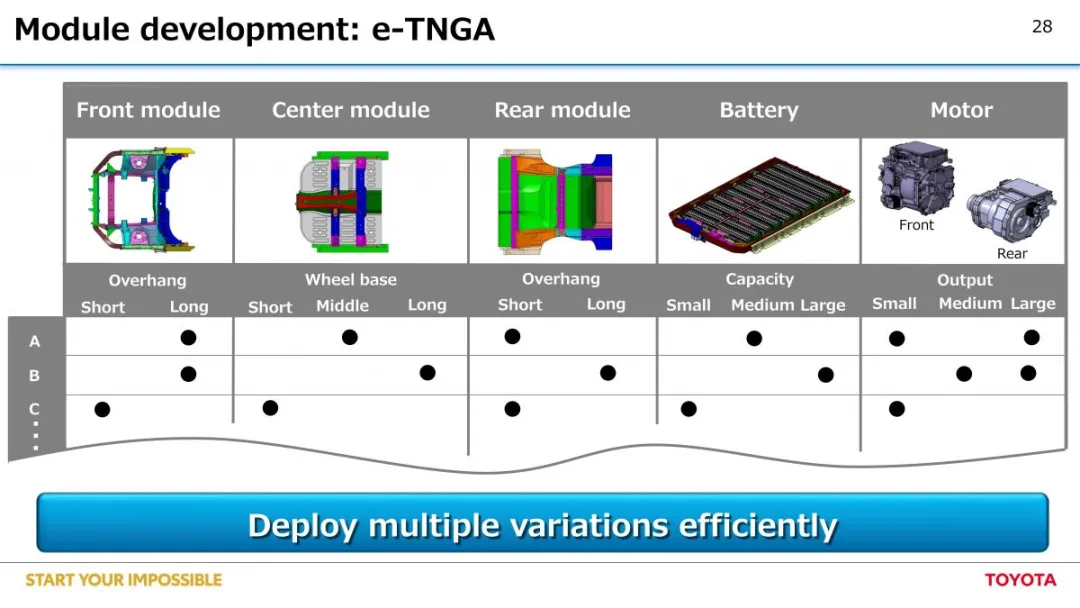
In addition to the bZ4 X developed jointly with Subaru, Toyota will also release 5 bZ models based on the e-TNGA architecture, including a compact crossover vehicle developed in collaboration with Daihatsu and Suzuki, a medium-sized van, a medium-sized Cross crossover, a medium-sized sedan, and a large SUV.
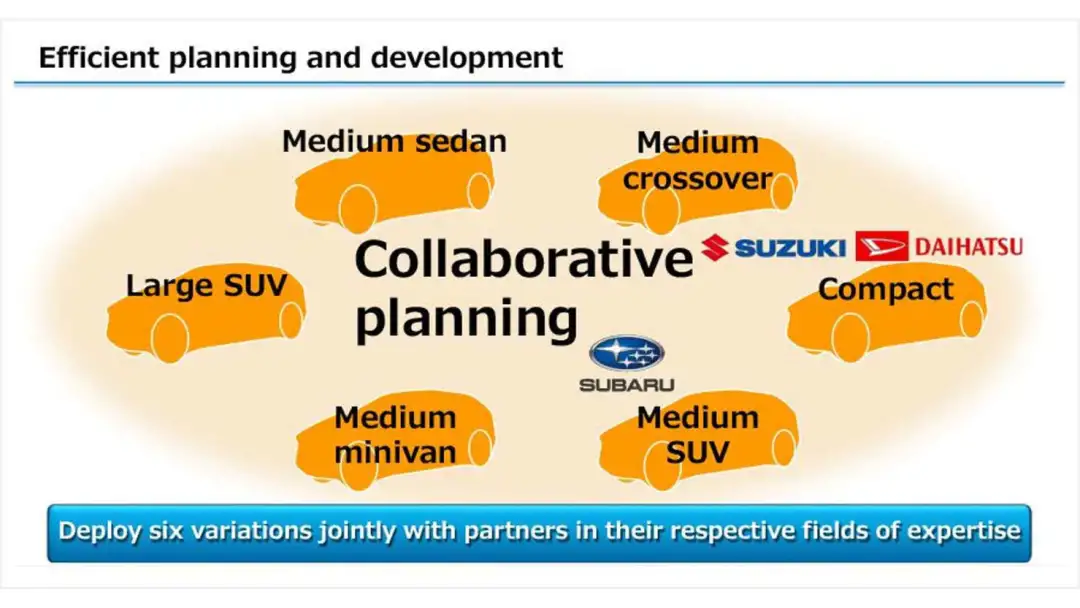
Toyota’s acceleration of its pure electric initiative is also reflected in active exploration of partnerships. By sharing the e-TNGA architecture with Subaru, Suzuki, and Daihatsu, Toyota can reduce costs and accelerate research and development. At the same time, Toyota will allocate resources reasonably according to each brand’s characteristics, with Suzuki and Daihatsu focusing on small cars, Subaru on medium-sized cars, and Lexus on luxury cars, to play to each brand’s strengths.
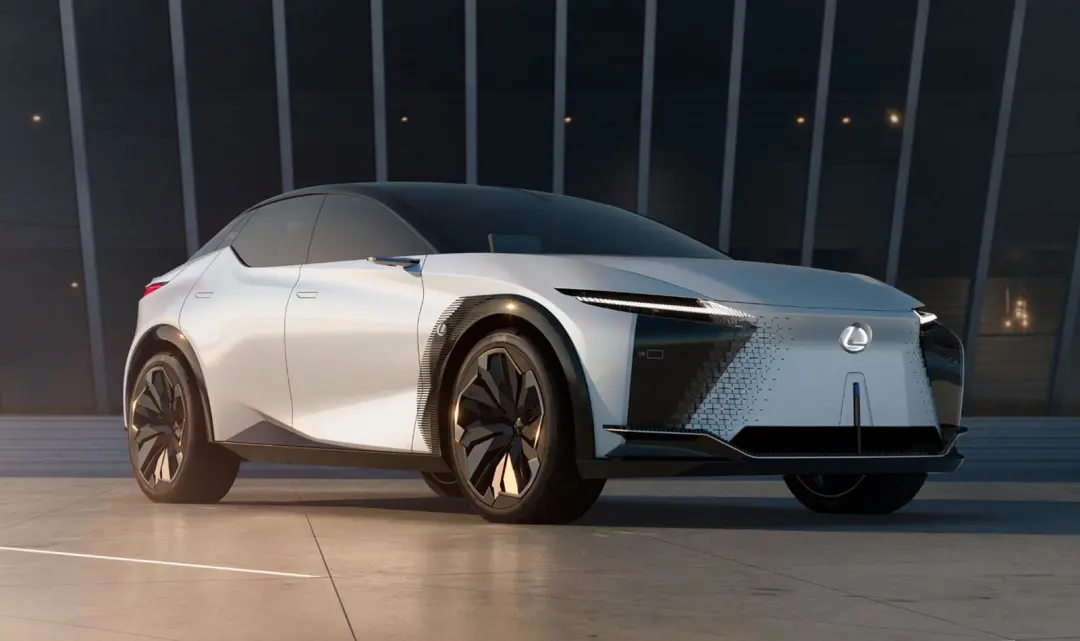
In addition to jointly developing pure electric models with domestic manufacturers such as Subaru and Suzuki, Toyota is also seeking partners globally.
On July 19, 2019, Toyota signed an agreement with BYD to jointly develop electric vehicles and batteries: BYD and Toyota will jointly develop sedans and low-floor SUVs, and also develop power batteries for joint electric vehicles and other vehicles.
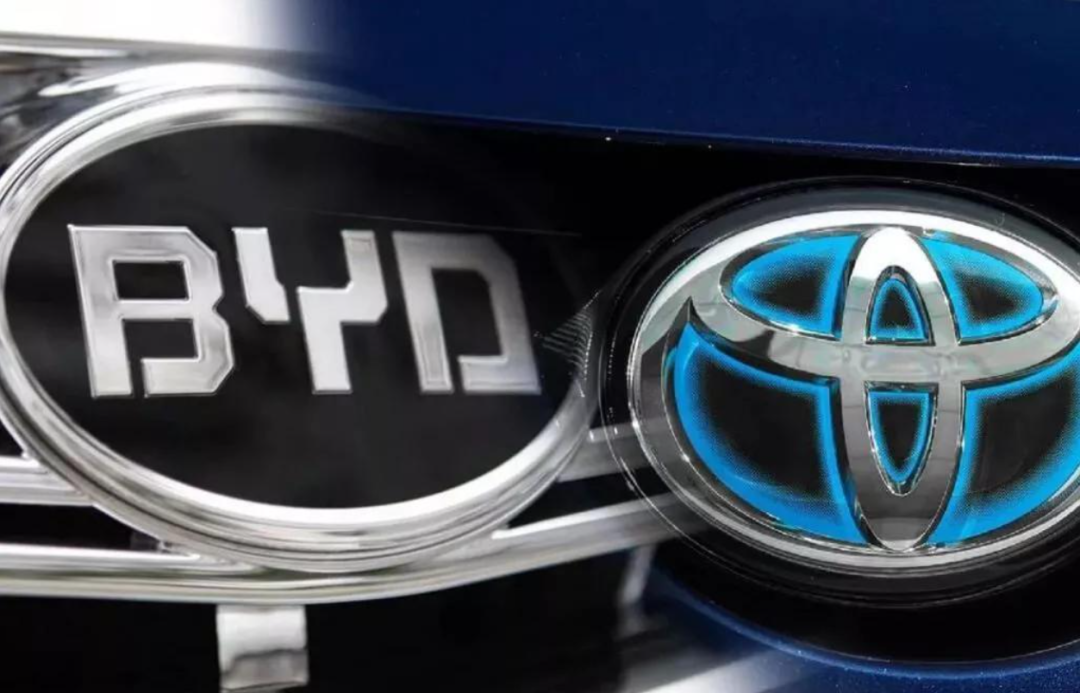
These new cars will be launched in the Chinese market before 2025, initially sold under the Toyota brand. In November 2019, Toyota also announced the establishment of a pure electric vehicle development company jointly funded by BYD, engaging in the design, research and development of pure electric vehicles, platforms, parts and related businesses.
In the field of power batteries, in addition to BYD, brands such as LG, Samsung, Panasonic, Toshiba and Ningde Times familiar to us have entered Toyota’s procurement range.
As for the next generation of lithium battery technology – solid-state batteries, Toyota also has deep technological accumulation. In terms of the number of solid-state battery patents, Toyota leads the world, especially in the sulfide solid-state battery technology route.
 On an online forum on December 7, 2020, Toyota announced that it would begin selling electric cars using solid-state batteries in 2025. This car may be the solid-state battery new energy model that Toyota’s former Executive Vice President and Chief Technology Officer, Shigeki Terashi, revealed that it would be launched at the 2020 Tokyo Olympics.
On an online forum on December 7, 2020, Toyota announced that it would begin selling electric cars using solid-state batteries in 2025. This car may be the solid-state battery new energy model that Toyota’s former Executive Vice President and Chief Technology Officer, Shigeki Terashi, revealed that it would be launched at the 2020 Tokyo Olympics.
What is certain now is that this solid-state battery model will be a limited edition brand-building car model, just like the first fuel cell car Mirai, “but the market ambition should not be underestimated, and the future product matrix will gradually expand.”
“Multi-Track and Parallel Advancement”
On the one hand, Toyota responds to the big environment, adjusts its new energy strategy, accelerates the R&D and deployment of pure electric vehicle models. On the other hand, Toyota still has not forgotten hydrogen fuel cell technology.
Toyota and FAW plan to invest RMB 8.495 billion to establish a new energy vehicle factory in Tianjin, covering an area of nearly 2 million square meters, with a designed annual production capacity of 200,000 vehicles, covering the six major processes of stamping, welding, paint spraying, final assembly, plastic coating, and battery manufacturing in the production of new energy vehicles.
The factory is mainly used to produce vehicles based on a pure electric platform in the future, but it is worth noting that the product line of the factory will be independent of the 2018 TEDA factory transformation project, “not limited to e-TNGA models”, in addition to Toyota and BYD joint development of pure electric vehicle models based on the BYD e-platform, it may also produce fuel cell vehicles.
According to the strategic cooperation framework agreement signed by Toyota and FAW in the field of electrification and intelligent network connection in September 2019, in addition to hybrid vehicles, plug-in hybrid vehicles, and pure electric vehicles, both parties will also launch hydrogen fuel cell vehicles.
After Toyota’s Corolla 2-door car with the latest hydrogen powertrain completed the 24-hour endurance race test in June 2021, Akio Toyoda stated that “hydrogen-powered cars will become the best alternative to electric cars in the future.”
In October 2020, Toyota gave two Toyota fuel cell flagship products, Mirai, to the Pope at the Vatican. In addition, Toyota’s FCEV Coaster, which uses a hydrogen fuel cell powertrain, is planned to be mass-produced in 2022 and will be used in the Beijing 2022 Winter Olympics. Toyota’s intention is to showcase its achievements in the R&D and application of hydrogen fuel cell power.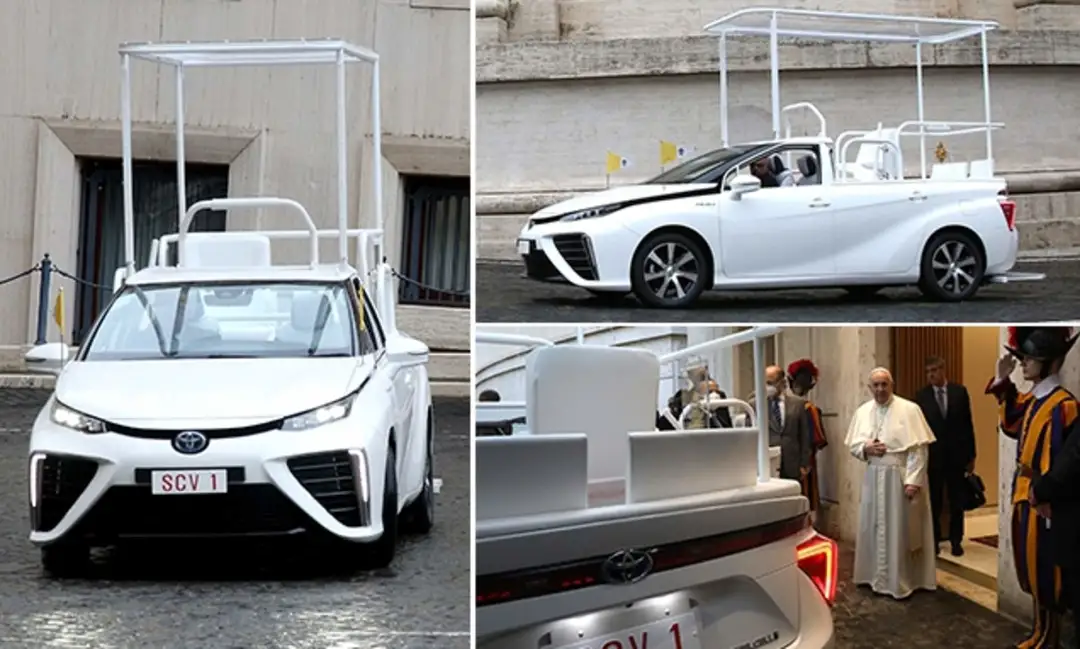
Multimodal parallelism, covering various technological routes such as hybrid, electric, and fuel cell vehicles, is Toyota’s overall electrification strategy. Speaking at the Toyota headquarters in Aichi Prefecture, Director Shigeki Terashima stated, “It’s too early to focus only on one option (electric vehicles) now. Before 2050, different options, including hybrid and fuel cell vehicles, need to compete with each other so that the company can get the best choice.”
“Epilogue”
Under various labels such as “Hybrid Pioneer,” “Hydrogen Fuel Cell Diehard,” and “Pure Electric Follower,” Toyota, the giant of the era of fuel cars, remains the most complex presence in the new energy wave.
On the road to electrification, Toyota has adapted to the trend, adjusted its strategy, and accelerated the transformation towards pure electric vehicles, but it also remains persistent in its original ideas and technological routes–“Electric vehicles will play a greater role in reducing emissions, but other solutions should also be adopted, such as successful hybrid vehicles or slow-selling hydrogen fuel vehicles.”
This article is a translation by ChatGPT of a Chinese report from 42HOW. If you have any questions about it, please email bd@42how.com.